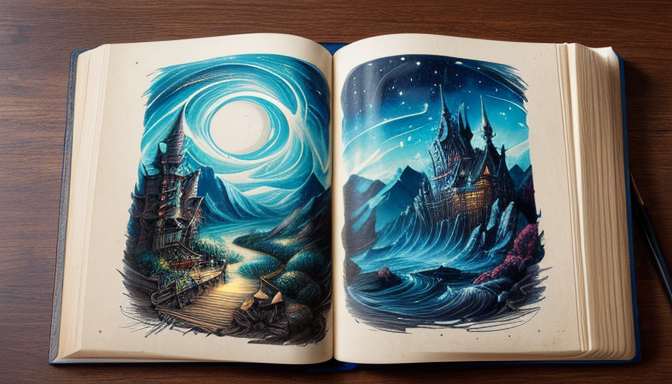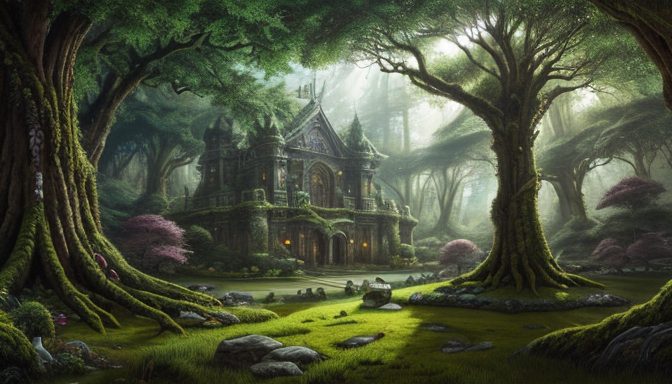Have you ever been completely absorbed in a book, feeling like you could step right into the pages? That’s the magic of immersive worldbuilding. It’s not just about creating a backdrop for your story; it’s about crafting a living, breathing universe that pulls readers in and makes them feel at home. To achieve this, you need to pay close attention to various elements that form the foundation of your fictional universe.
Let’s break it down into key components that you should consider:
- Geography: Think about the landscapes, climates, and natural resources. How do these elements influence the lives of your characters?
- Politics: Every world has its power dynamics. Who holds the reins of power? What conflicts arise from these political structures?
- Mythology: A rich tapestry of myths and legends can add depth. What stories do your characters believe in, and how do these shape their actions?
- Culture: From traditions to languages, culture breathes life into your world. What festivals do they celebrate? What are their daily rituals?
By weaving together these elements, you create a universe that feels authentic and relatable. Remember, every detail matters. Just like a painter with a canvas, the more vibrant and intricate your world, the more your readers will want to explore it. So grab your tools and start building; your next adventure awaits!
Key Elements of Worldbuilding
When it comes to crafting a story that resonates with readers, worldbuilding is your secret weapon. Think of it as the foundation of a house; without a solid base, everything else can crumble. The key elements of worldbuilding include geography, culture, and history, each playing a vital role in shaping the narrative landscape.
First up, let’s talk about geography. Imagine your world as a character itself; its mountains, rivers, and climates can influence the actions and decisions of your characters. For instance, a desert setting might lead to scarcity, while a lush forest could symbolize abundance. The geography not only sets the stage but also drives the plot. Ask yourself: how does the physical environment affect the inhabitants? What challenges do they face?
Next, we dive into culture. This is where the heart of your world beats. Culture encompasses everything from language and traditions to art and social norms. It’s the spice that adds flavor to your world. Consider creating unique customs or festivals that reflect the values and beliefs of your societies. This not only enriches your narrative but also immerses readers in a vibrant world.
Finally, history is the backbone of your world. Every culture has its past, filled with triumphs and tragedies that shape its identity. Create a timeline of significant events that have influenced the current state of your world. This can include wars, discoveries, or even mythical tales that have become part of the lore. By weaving these elements together, you create a tapestry that draws readers in, making them feel as if they are part of something greater.
In summary, by paying attention to these key elements—geography, culture, and history—you can construct a rich and immersive universe that captivates your audience and leaves them yearning for more.

Techniques for Immersive Storytelling
When it comes to immersive storytelling, the magic lies in the details. Think of your narrative as a vast tapestry, where every thread contributes to the overall picture. To create a world that feels alive, you need to delve into various elements that shape your fictional universe. Start with geography; map out the landscapes, from towering mountains to sprawling cities. This will not only help you visualize your world but also provide a backdrop for your characters’ adventures.
Next, consider the politics of your world. Who holds power? What conflicts simmer beneath the surface? Crafting a political landscape adds layers of complexity and can drive your plot forward. Imagine a kingdom on the brink of war or a rebellion brewing in the shadows. These dynamics can create tension and intrigue, keeping readers on the edge of their seats.
Don’t forget about mythology and culture; they are the soul of your world. Create rich histories, legends, and traditions that your characters can reference. This not only enriches your narrative but also makes your world feel authentic. For instance, you might design a unique festival that reflects your society’s values or a myth that explains a natural phenomenon.
Finally, use sensory details to draw readers in. Describe not just what characters see, but also what they hear, smell, and feel. This multi-sensory approach can transport your audience right into the heart of your story, making them feel as if they are experiencing your world firsthand. So, are you ready to weave your own enchanting tapestry of storytelling?
Frequently Asked Questions
- What is worldbuilding?
Worldbuilding is the art of creating a detailed and immersive fictional universe. It involves crafting elements like geography, culture, and history, which all contribute to a believable setting for your story.
- Why is worldbuilding important in storytelling?
Worldbuilding is crucial because it sets the stage for your narrative. A well-developed world can enhance the reader’s experience, making them feel like they’re truly part of the story. Think of it as the backdrop to a play; without it, the performance feels flat!
- How can I improve my worldbuilding skills?
Improving your worldbuilding skills takes practice! Start by researching different cultures and histories, and consider how they can influence your fictional world. Additionally, use sensory details to make your settings come alive—what does it look, smell, or sound like?
- Can I use real-world elements in my worldbuilding?
Absolutely! Incorporating real-world elements can add depth and relatability to your fictional world. Just remember to give them a unique twist to keep things fresh and engaging!

Recent Comments